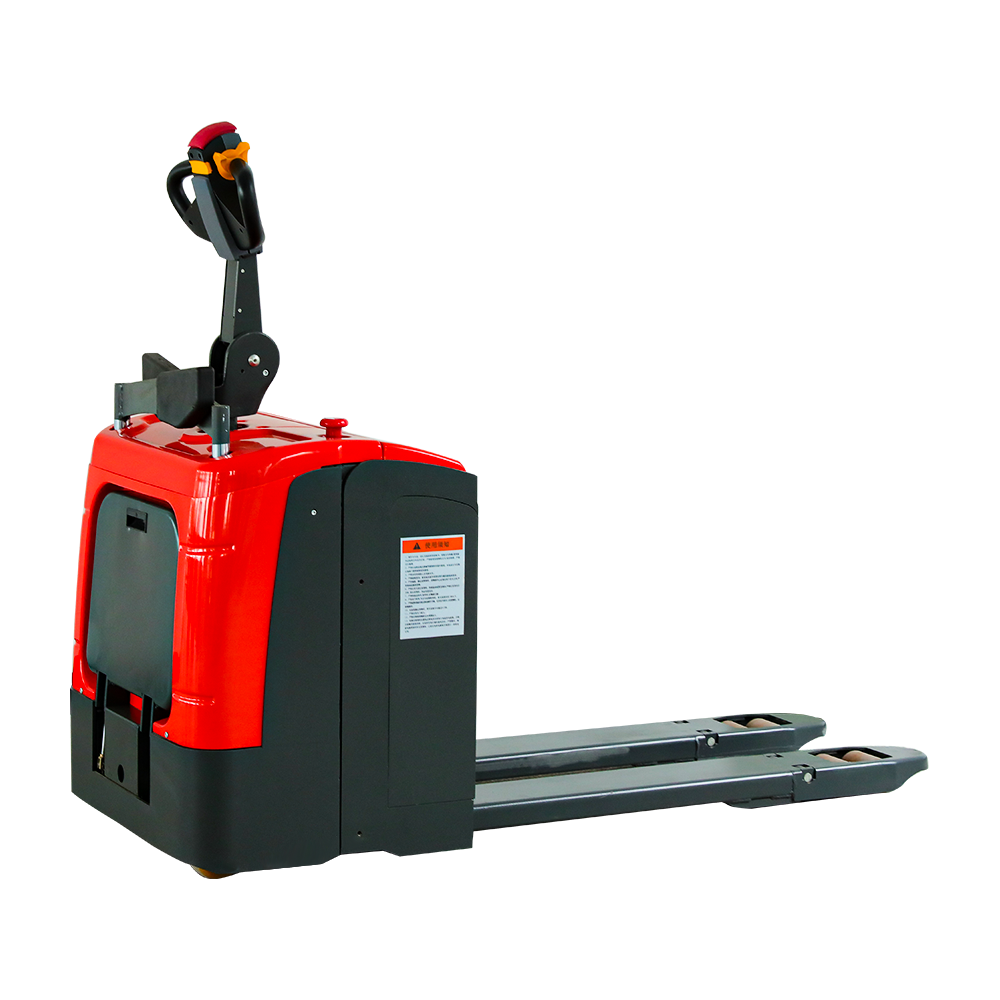The structural design of a power pallet truck determines its load capacity to a large extent. Here are the main aspects:
Material selection and strength: The materials used for the main structural parts of the power pallet truck, such as the frame, forks, support arms, etc., directly determine its load capacity. High-quality high-strength steel or alloy materials can withstand greater stress and pressure, ensuring that the vehicle remains stable and durable under high loads. Material thickness and cross-sectional shape are also key factors affecting load capacity. Thicker materials and reasonable cross-sectional shapes can provide larger support areas and better bending and torsion resistance.
Structural layout and optimization: The structural layout of the power pallet truck should take into account the transmission and distribution of force. Through reasonable structural design and optimization, it is possible to ensure more uniform force transmission between various components of the power pallet truck, avoid local stress concentration, and thereby improve load capacity. For example, the design of the frame can use reinforcing ribs and beams to increase stiffness, the design of the cargo fork can take into account the distribution and stability of the center of gravity of the cargo, and the design of the support arm can ensure balance during lifting and handling.

Fork and pallet adaptability: The fork is the part of the power pallet truck that is in direct contact with the goods. Its design and adaptability have a great impact on the load capacity. Parameters such as the length, width, fork tip shape and spacing of the forks should be adapted to different sizes and types of pallets to ensure that the goods can be stably placed on the forks. At the same time, the strength and rigidity of the forks also need to be high enough to withstand the weight of the goods and the shock and vibration during handling.Our CBD-Y all-terrain outdoor electric pallet truck features customizable fork lengths and widths, making it suitable for various ground operations. It is designed with a sturdy and stable structure to meet your different preferences.
Chassis and drive system: The chassis is the foundation of a power pallet truck, and its structural design and material selection are crucial to the load capacity. The chassis should be strong and stable enough to bear the total weight of the vehicle and cargo. The design of the drive system also needs to take load capacity into consideration. The powerful motor and transmission system can provide sufficient power and torque to support the stable operation of the vehicle under high loads.
Modularity and scalability: Some high-end power pallet trucks are designed with modularity and scalability in mind. This means the vehicle can be configured and upgraded as needed to suit different load requirements. For example, load capacity can be increased by replacing a more powerful motor, increasing the number of forks, or improving the chassis structure. This flexibility allows power pallet trucks to be adapted to a wider range of application scenarios.
The comprehensive consideration and optimization of these design elements can ensure that the vehicle has excellent load capacity and stability in practical applications.


 русский
русский Français
Français Español
Español







